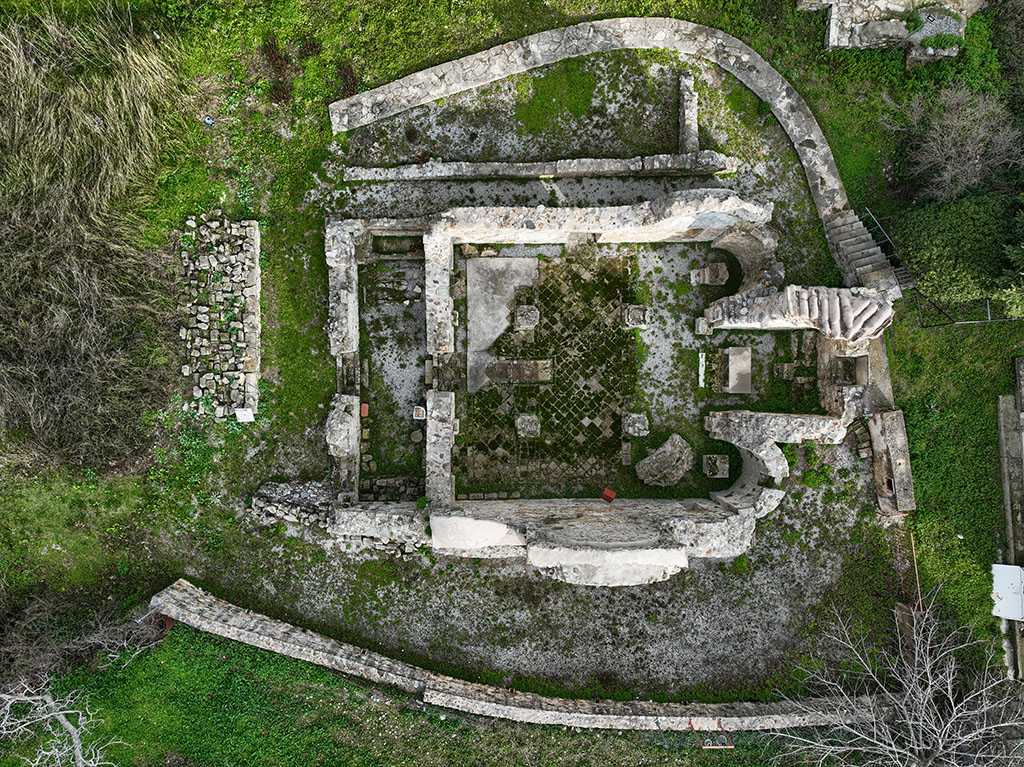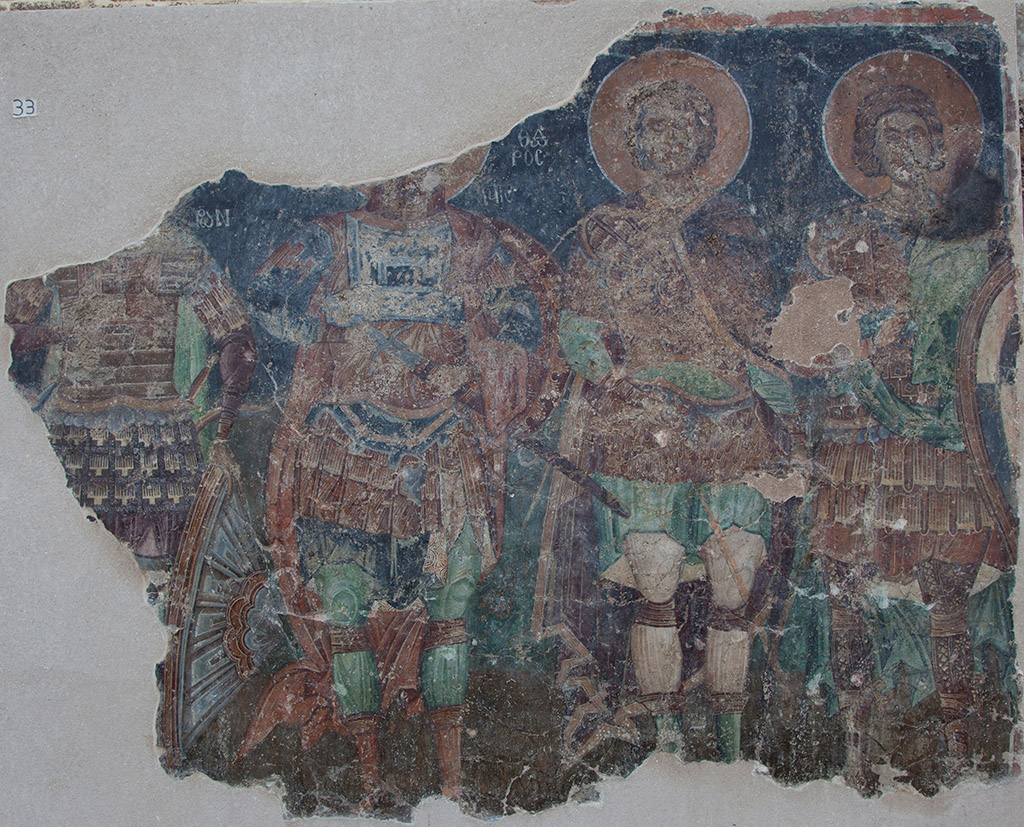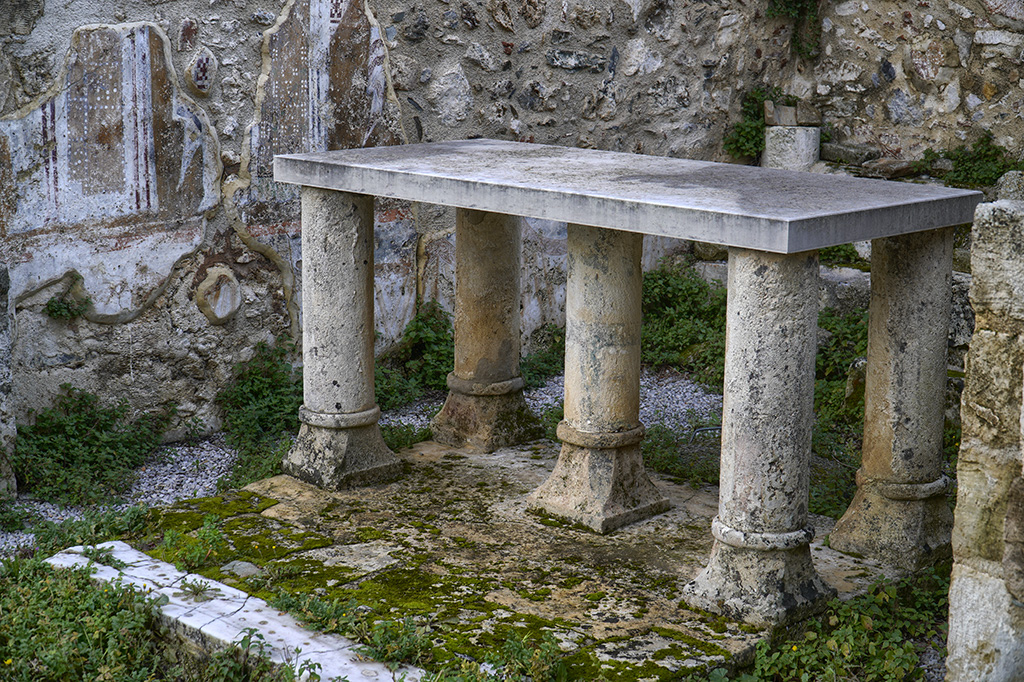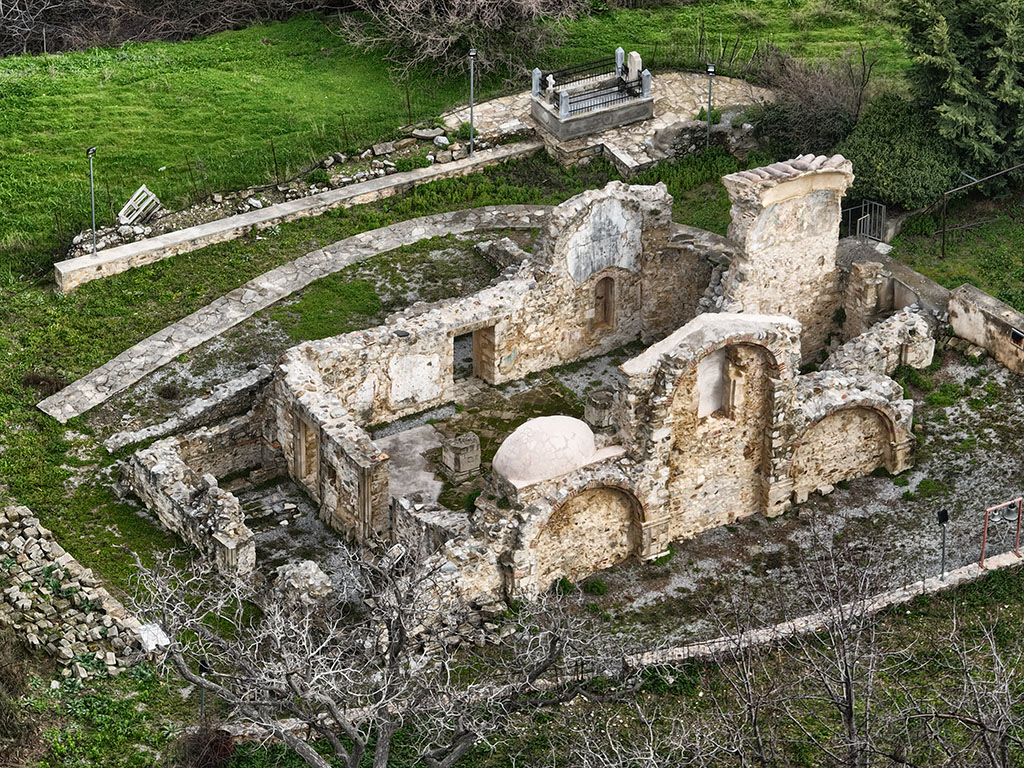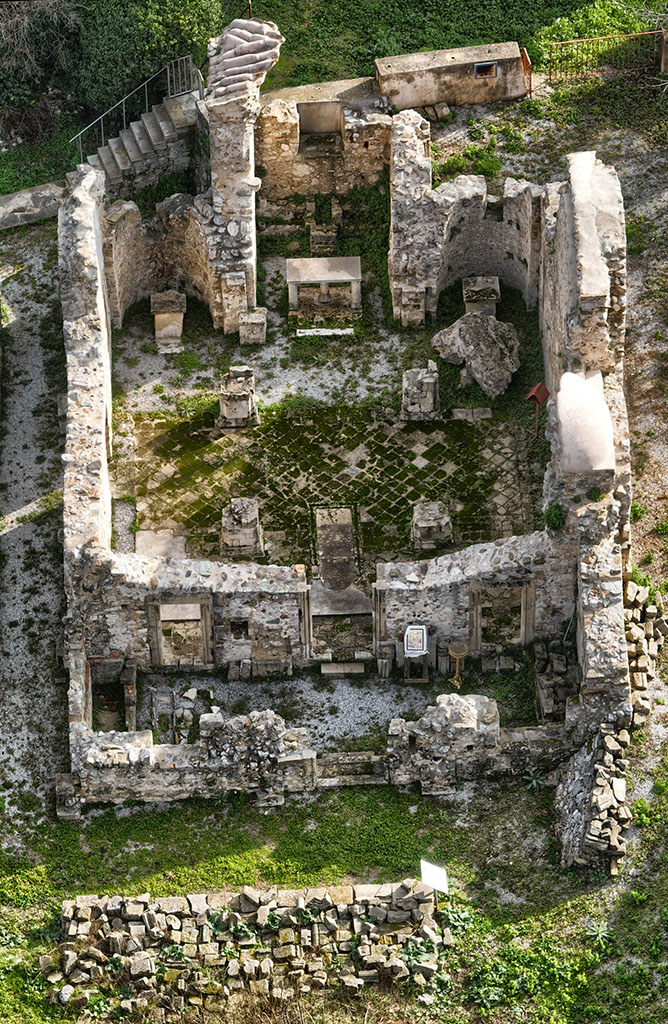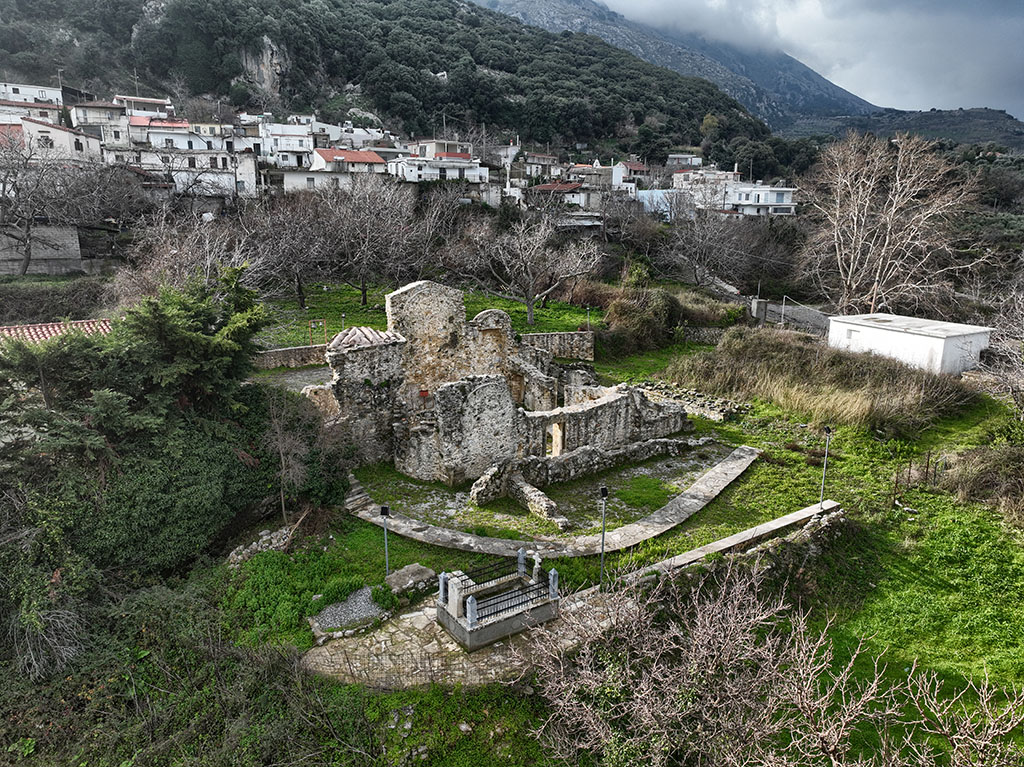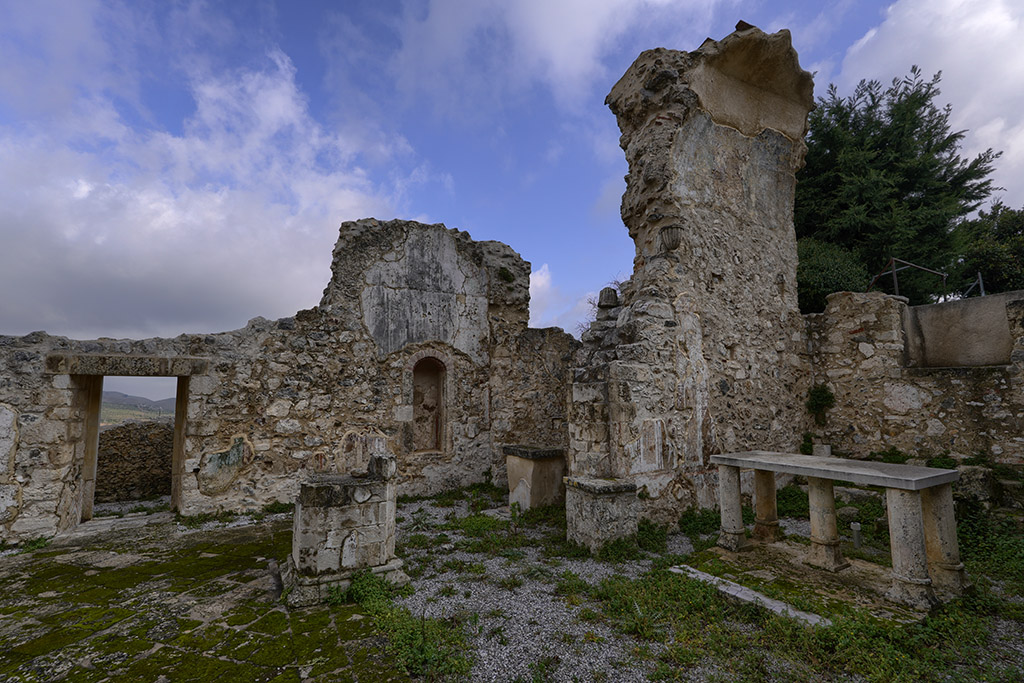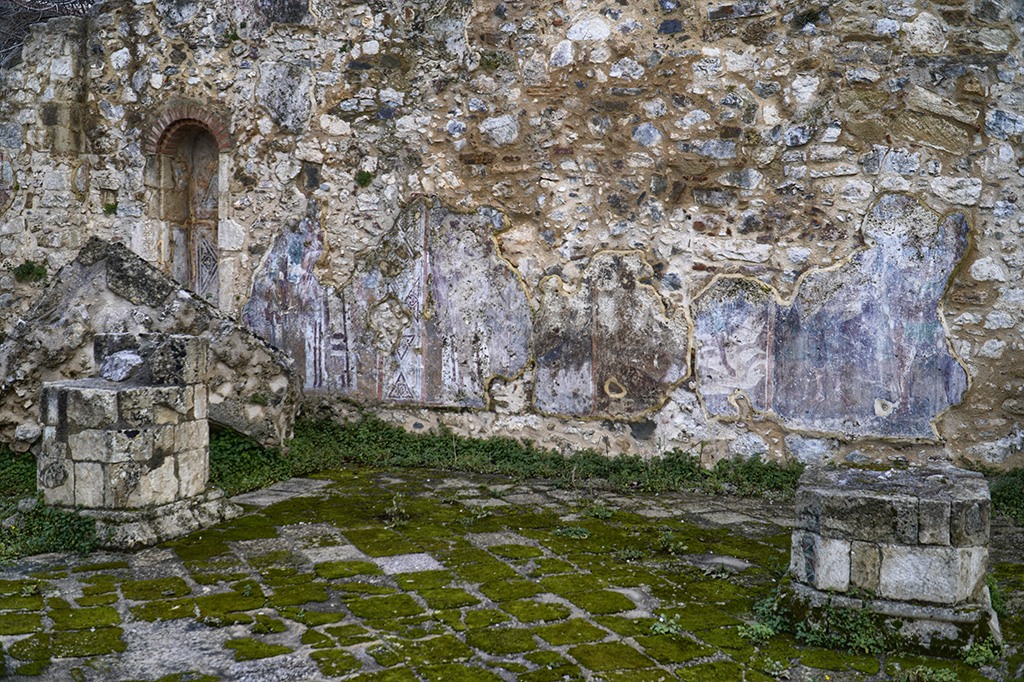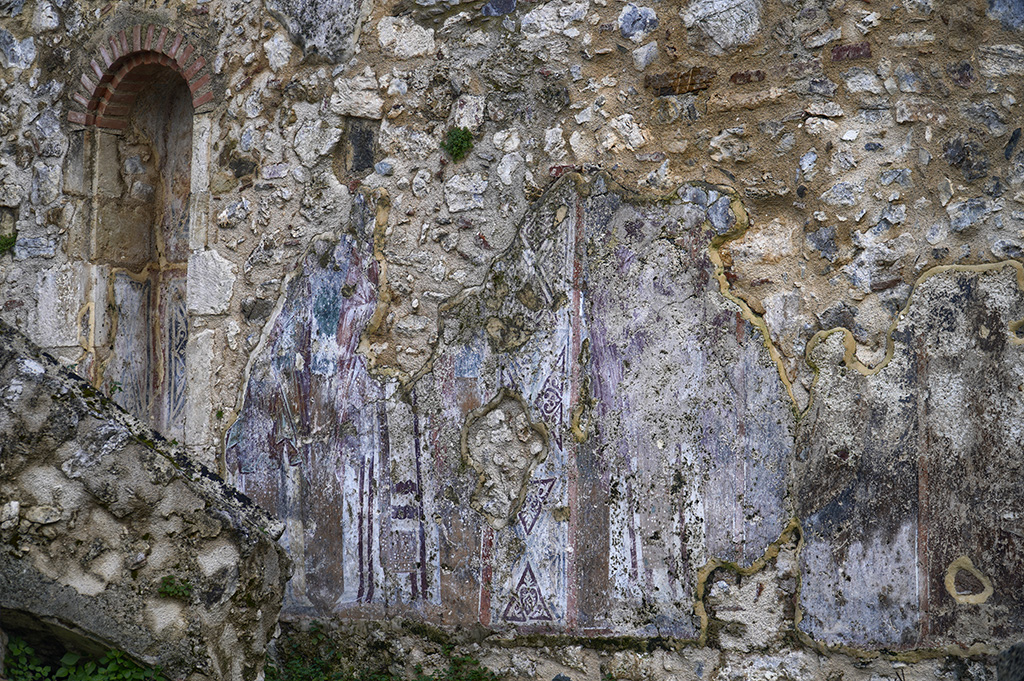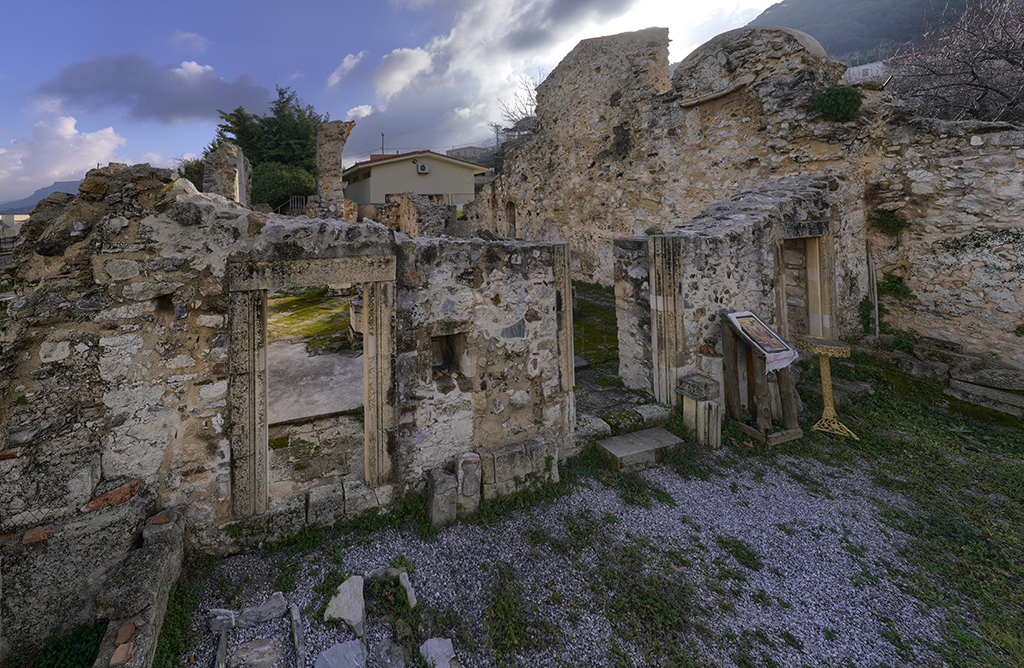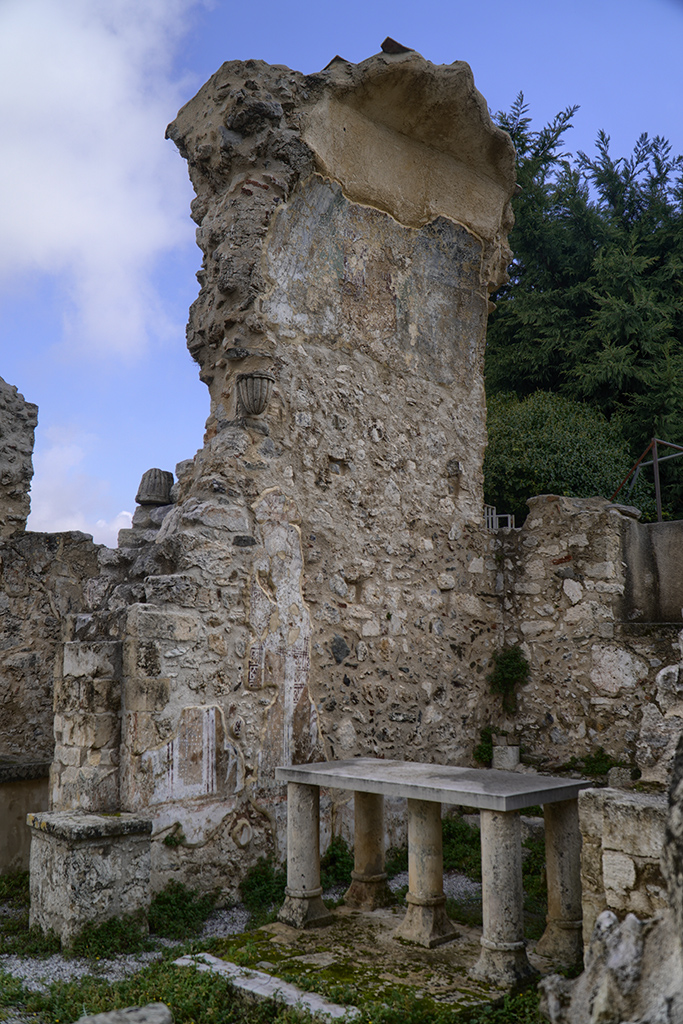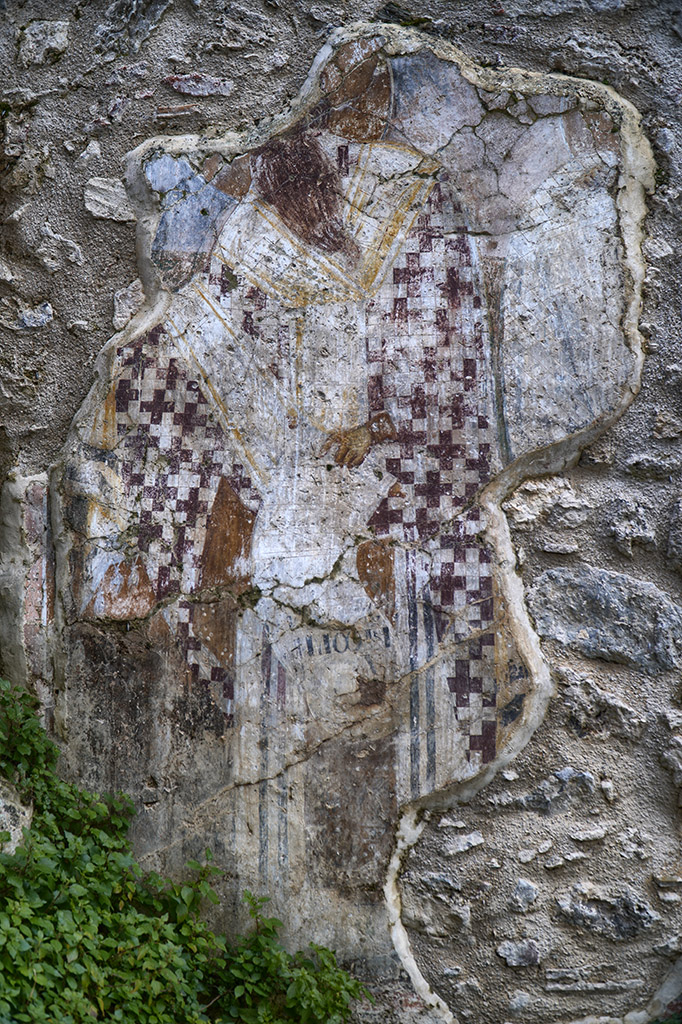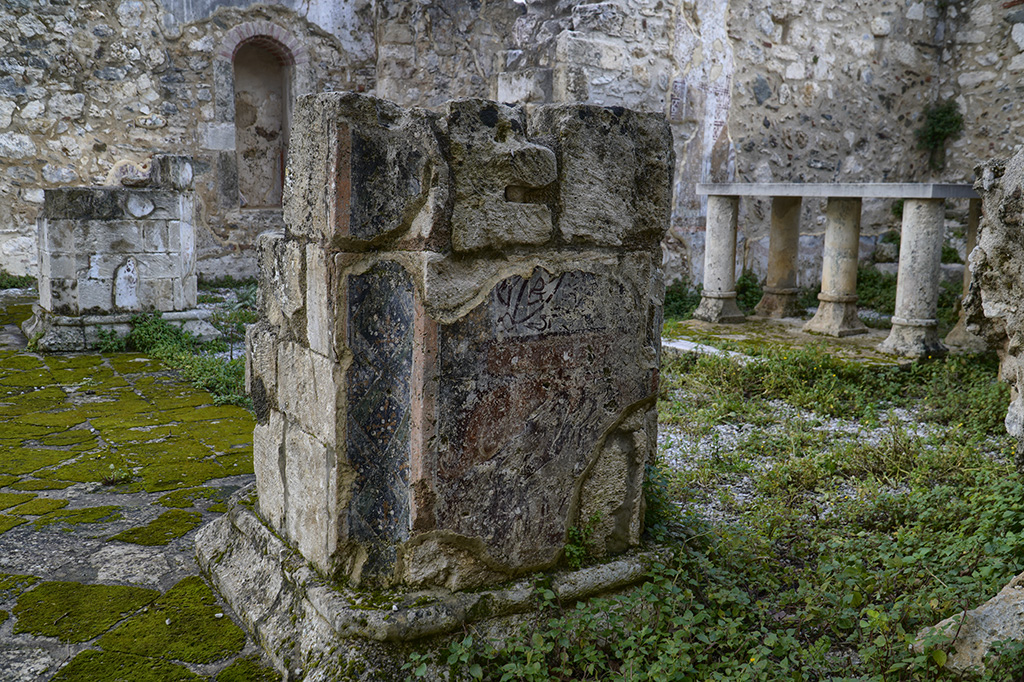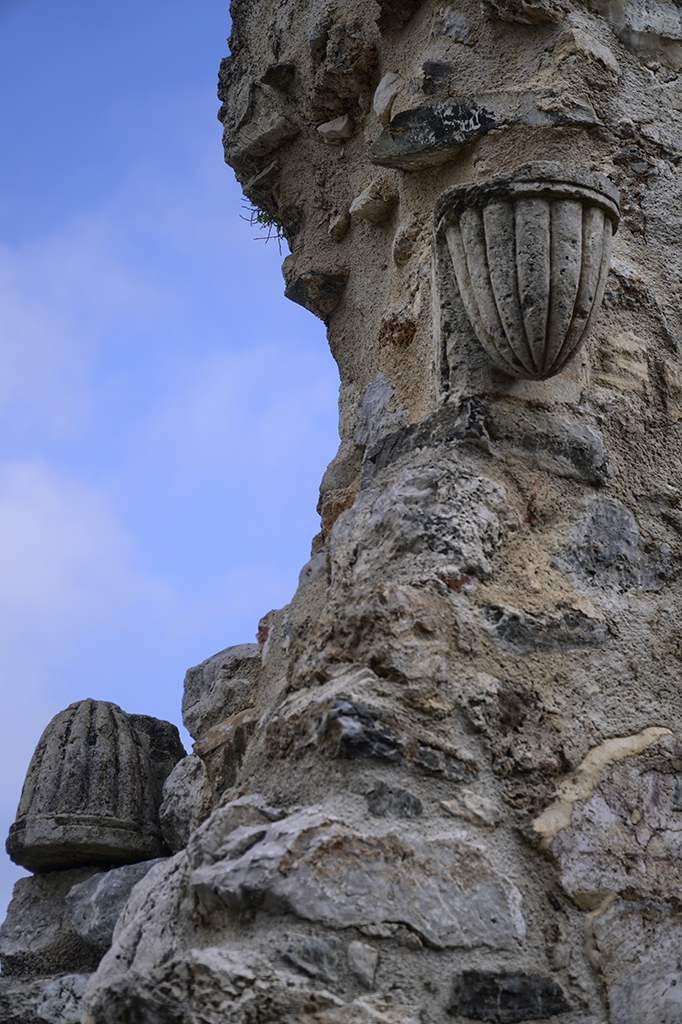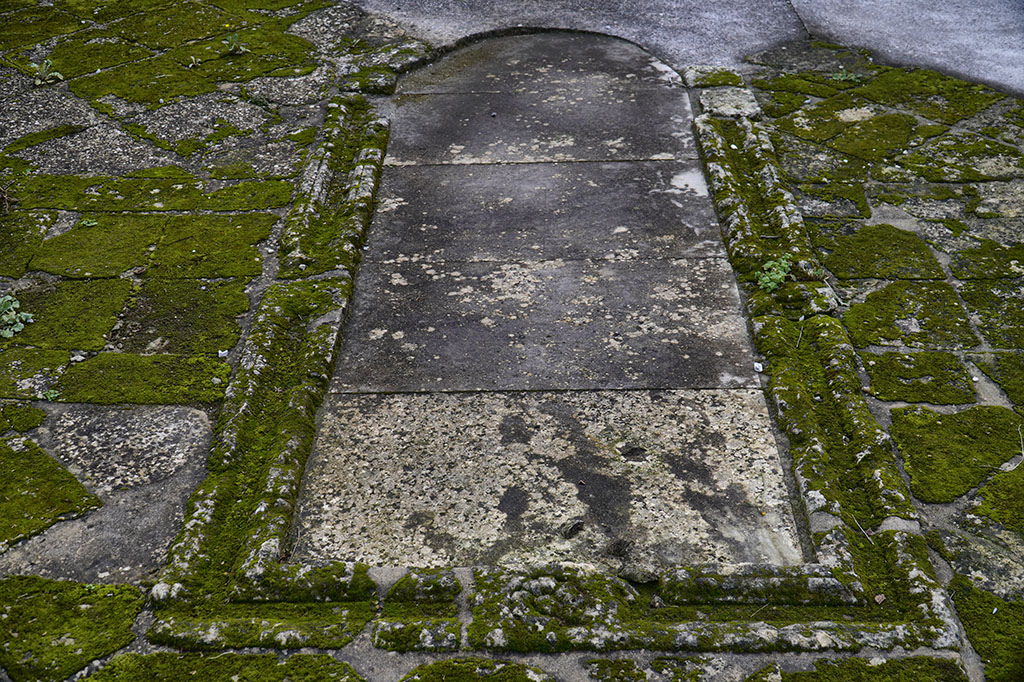Patsos, church of Panagia (Virgin Mary)
The Panagia church in Patsos is a large, imposing building in the cross-in-square plan.
It is preserved without a roof, as a significant part of the building had collapsed prior to the 20th century. In the early 21st century, the church was restored to its current state by the Archaeological Service. The church features a wide tripartite narthex and a rectangular apse with a synthronon (a liturgical structure at the back of the altar, with benches for the clergy and the bishop’s throne). The building exhibits typical western elements, including carved door frames and rib vaults, and dates back to the 14th century. The frescoes, which are of exceptional quality, were created by a highly skilled painter’s workshop at around 1320. In 1973, many frescoes were removed in order to be protected from the weather conditions and they were subsequently transferred to the Museum of Saint Catherine in Heraklio. Later, the frescoes were returned to the Ephorate of Antiquities of Rethymno. Some of them are currently on display in the Temporary Exhibition of the Archaeological Museum of Rethymno.
Bibliography
Β. Αγγελάκη, «Η ανασκαφική έρευνα στον ναό της Παναγίας στην Πατσώ Αμαρίου», Ε. Προκοπίου, Ν. Πύρρου, Ευμάθιος Φιλοκάλης. Ανάδειξη Βυζαντινών μνημείων Κρήτης και Κύπρου, Ρέθυμνο 2014, σ. 96-105.
Μ. Ανδριανάκης, «Ο ναός της Παναγίας στην Πατσώ Αμαρίου», Ε. Προκοπίου, Ν. Πύρρου, Ευμάθιος Φιλοκάλης. Ανάδειξη Βυζαντινών μνημείων Κρήτης και Κύπρου, Ρέθυμνο 2014, 58-75.
Ν. Πλάτων, «Η ανασκαφή εν Πανόρμω Μυλοποτάμου Κρήτης», ΠΑΕ 104, 1949 (1951), σ. 109-112.
Military saints. Detached fresco
The detached fresco of the four military saints comes from the lower part of the southern wall of the church. Procopius and Mercurius, the two beardless saints, are better preserved than the other two, who are identified as Saints Theodores, Tiron, and Stratilatis based on their partially preserved inscriptions. The bright green colour prevails in their vestments. Their military equipment has been depicted with great care and attention to detail.
The Altar
The altar is composed of a rectangular base and five colonettes - four in the corners and one in the centre. During the restoration works of the church, a stone covering slab was placed on top. Traces of colours can be seen on the colonettes, while a large dark brown cross is formed on the central column. Elongated lanceolate leaves decorate the bases of the colonettes. Similar-shaped capitals were particularly widespread in the religious architecture of Crete during the 14th century.
Photo Gallery
- Aerial photo.
- Aerial photo.
- The church of Virgin Mary and the settlement. Aerial photo.
- Northeast corner.
- Mural fragments on the southern wall.
- Μural fragments.
- Τhe narthex.
- The bema (presbytery).
- Hierarch.
- Fragments of mural painting on a pillar of the church.
- Two corbels that used to support the cross vault of the bema’s covering.
- The grave on the church’s floor.

